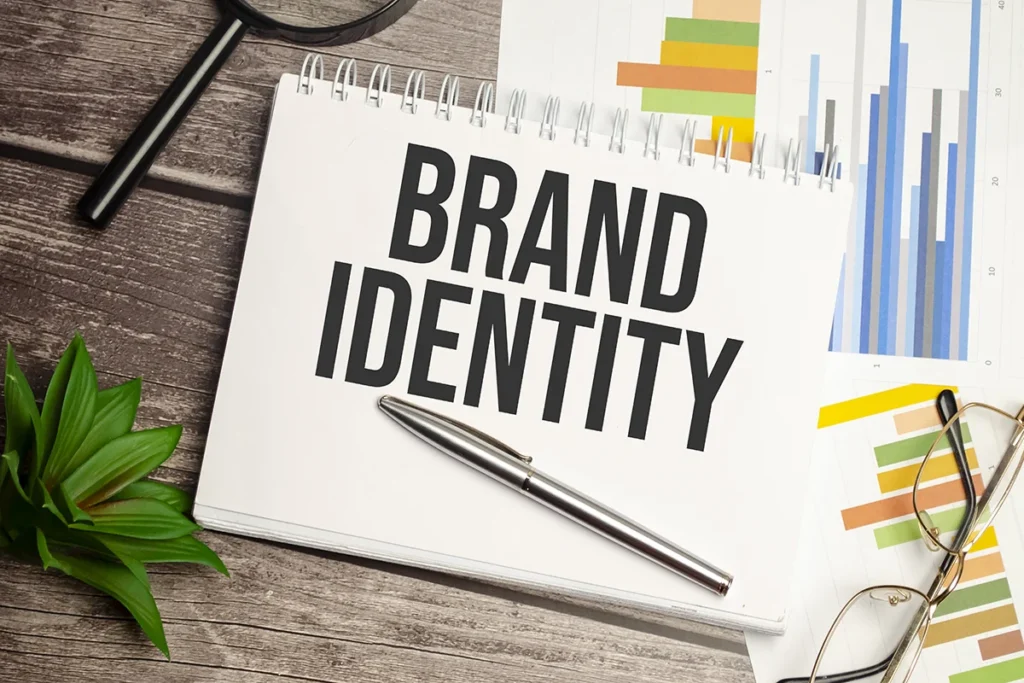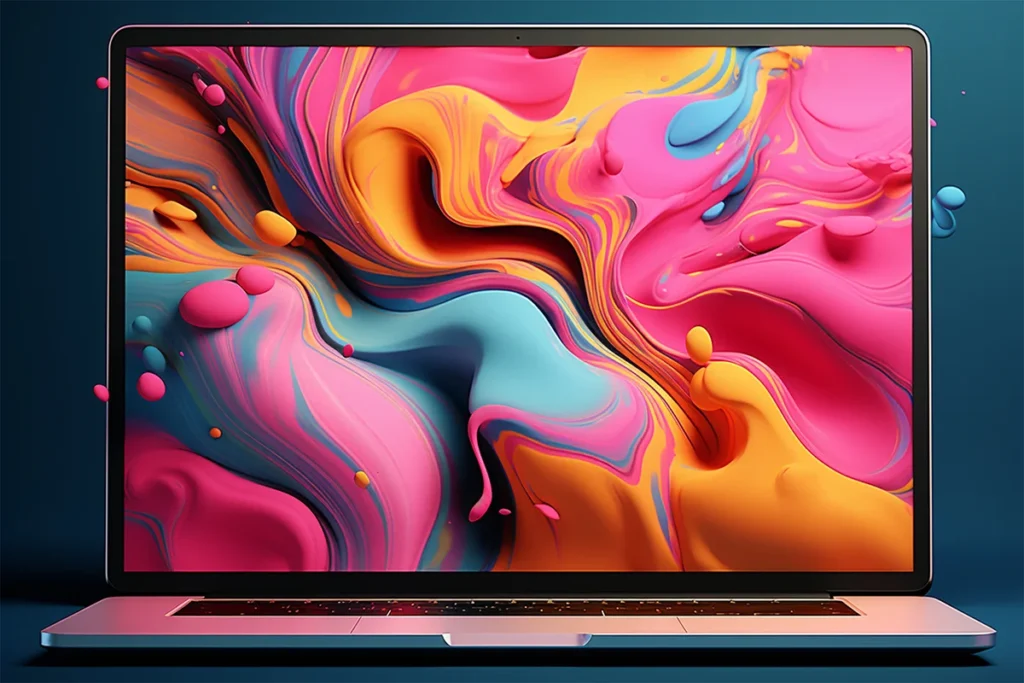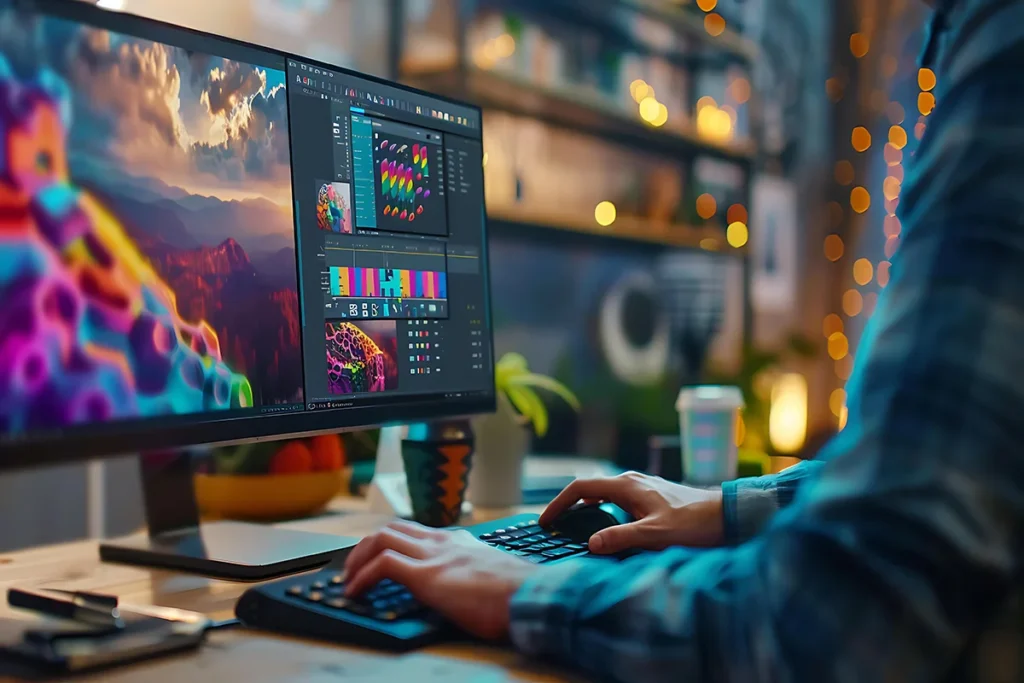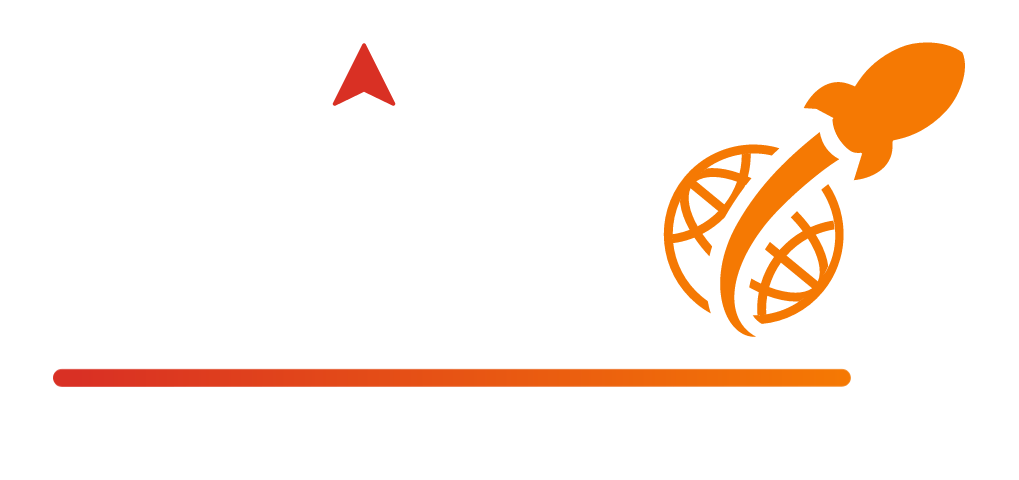Graphic design is evolving rapidly. Its future holds trends and technologies that will shape marketing strategies, particularly regarding THE FUTURE OF GRAPHIC DESIGN: THE ESSENTIAL ROLE OF GRAPHIC DESIGN IN YOUR MARKETING STRATEGY. This article examines these changes and highlights why graphic design remains a critical element for brand success in a competitive landscape. Learn how to leverage this dynamic field to boost your marketing efforts by understanding and integrating your brand’s identity.
Key Takeaways
- Graphic design has evolved significantly from print to digital, adopting new technologies and integrating with social media to enhance brand engagement.
- A strong visual identity, characterized by consistent design elements and emotional connections, is crucial for effective brand identity and consumer loyalty. A clear definition of a brand’s mission, messaging, and values collectively form its brand’s identity and influence how it communicates with its audience through visual elements.
- Current graphic design trends like minimalism, motion graphics, and sustainable design are shaping the future of marketing and enhancing user experience.
What is Graphic Design?
Graphic design is the art of communicating ideas and messages through visual elements such as typography, images, colors, and shapes. It involves the use of creative and technical skills to produce visual content that conveys a specific message or idea. Graphic designers employ a variety of techniques, including both manual and digital tools, to create visual communications that are not only effective but also aesthetically pleasing. The goal of graphic design is to establish a visual language that resonates with a specific audience, ensuring that the intended message is clearly and compellingly conveyed.
Graphic design is a multifaceted discipline that encompasses various forms of visual communication. From creating logos and branding materials to designing websites and advertisements, graphic designers play a crucial role in shaping how information is presented and perceived. By combining artistic creativity with technical proficiency, graphic designers craft visual elements that capture attention, evoke emotions, and drive engagement.
Types of Graphic Design
Graphic design is a diverse field with numerous specializations, each catering to different needs and applications. Understanding the various types of graphic design can help businesses and individuals choose the right approach for their specific goals.
Brand and Visual Identity Design
Brand and visual identity design focuses on creating a cohesive visual identity for a brand or organization. This includes designing logos, typography, color schemes, and other visual elements that reflect the brand’s values and personality. The goal is to establish a consistent visual language that communicates the brand’s message and values to its target audience. A strong brand identity is essential for building recognition and trust, making it a critical component of any successful brand strategy.
Graphic designers specializing in visual identity design work closely with clients to understand their brand’s essence and translate it into visual elements that resonate with the audience. By creating a unified and memorable visual identity, these designers help brands stand out in a crowded marketplace and foster a deeper connection with their customers.
Marketing and Advertising Design
Marketing and advertising design is dedicated to creating visual content for marketing and advertising campaigns. This includes designing print and digital ads, brochures, flyers, and other marketing materials. The primary objective is to create visual content that captures the attention of the target audience and effectively communicates the intended message or idea.
Graphic designers in this field must understand the principles of marketing and how to use visual elements to influence consumer behavior. By crafting compelling visuals that align with marketing goals, these designers play a pivotal role in driving engagement and conversions. Whether it’s a striking billboard or an eye-catching social media ad, marketing and advertising design is all about making a lasting impression.
Web Design
Web design at INICIO.ONE focuses on creating visually compelling content for websites and digital platforms. This includes designing layout, typography, and visual elements, as well as interactive components like buttons and menus. INICIO.ONE aims to craft user-friendly, visually engaging websites that effectively convey your message to the target audience.
Graphic designers specializing in web design must balance aesthetics with functionality, ensuring that the website is not only beautiful but also easy to navigate. By employing responsive design principles, they ensure that the website provides a consistent and enjoyable user experience across various devices. In today’s digital age, a well-designed website is crucial for engaging users and building a strong online presence.
By understanding the different types of graphic design, businesses can better leverage the skills of graphic designers to achieve their marketing and branding objectives. Each specialization brings unique value, contributing to the overall success of a brand’s visual communication strategy.
The Evolution of Graphic Design in Marketing

The industry of graphic design has experienced an impressive evolution since the 1900s, continually adapting to advancements in technology and shifts in consumer demands. In the 1920s, ‘graphic design’ emerged as a recognized term to describe this crucial area of expertise. The roots of graphic design can be traced back to ancient times, evident in early manuscripts and cave paintings that established its fundamental role in visual communication. At INICIO.ONE, we leverage this rich history by offering top-notch graphic design services, including brand identity development, social media graphics, and website design, to help businesses effectively communicate their message and engage their audience.
In contemporary settings, graphic design plays a pivotal role by substantially boosting marketing strategies. It enables businesses to communicate more dynamically with their target audience through enhanced engagement.
From Print to Digital
Shifting from print to digital platforms has revolutionized the graphic design industry. Originally published works like magazines, posters, and product packaging have now evolved into dynamic digital content. This shift has heightened the need for graphic designers to master digital tools and techniques, fundamentally changing how many graphic designers work.
Digital publishing has transformed traditional graphic design roles and broadened the scope of visual communication.
Technological Advancements
The landscape of graphic design is in a constant state of evolution due to the advent of new technologies such as AI and AR. The industrial revolution marked a pivotal moment for this field with the introduction of computers, which significantly improved both productivity and creative possibilities.
By marrying technology with artistic creativity, we can fulfill the ever-changing demands of consumers and expand the limits within which graphic design operates.
Integration with Social Media
In the digital era, social media has become a dominant force for engaging with audiences and fostering brand interactions. For this reason, visual content on such platforms is essential in stimulating engagement and participation. Graphic designers today are challenged to tailor their designs for different social media formats and user groups while maintaining a consistent brand identity throughout all online channels.
Why Graphic Design is Crucial for Your Brand Identity

Graphic design goes beyond simply enhancing aesthetics; it plays an essential role in influencing consumer behavior and fostering brand loyalty by establishing a strong brand’s identity. At INICIO.ONE, we understand that establishing a coherent brand identity is crucial. This identity is comprised of visual elements such as color schemes and logos that effectively convey the intended image to consumers. Proficient graphic design acts as a vital conduit between a business and its customer base, enabling more effective transmission of the brand’s core message through visual means. Our team is dedicated to creating impactful designs that resonate with your audience and elevate your brand presence.
Visual Identity Elements
Graphic design focused on visual identity involves crafting the array of visual components that epitomize a brand’s essence. These crucial elements—spanning logos, typefaces, color schemes, and collections of images—are instrumental in forging a unified aesthetic for a brand. A robust brand identity is not solely dependent on its logo. Rather, it thrives through an amalgamation of multiple visual constituents harmonizing to forge an unforgettable presence. The strategic implementation of these visuals is pivotal in constructing an impactful visual identity.
In practice, maintaining uniform typography across various platforms serves as a potent vehicle for conveying the unique character inherent within a brand.
Consistency Across Platforms
Maintaining a uniform design is essential for enabling customers to quickly identify the brand, regardless of whether they encounter it on digital platforms or in physical spaces. It’s vital to establish consistency across all marketing avenues to cultivate recognition and comfort with the brand among consumers.
To guarantee this visual harmony throughout various marketing materials, brand guidelines must specify components such as color palettes and font styles.
Emotional Connection
Grasping the nuances of your target demographic is essential in crafting a brand that resonates deeply with customers. Establishing a robust brand identity nurtures an emotional bond with buyers, thereby enhancing their satisfaction and likelihood to convert. Studies of effective graphic design have shown its power to revolutionize both user experience and engagement levels within a brand.
Take Burt’s Bees as an example. It distinguishes itself from competitors by adhering firmly to its eco-centric ethos, clearly conveying its unique position which fortifies consumer trust.
Enhancing User Experience Through Graphic Design
The implementation of graphic design greatly enhances user interaction and overall experience. Prioritizing mobile-first design ensures that content is easily accessible and tailored for optimal viewing on smaller screens. This approach not only improves usability but also engages users more effectively, fostering a deeper connection between brands and their audience. INICIO.ONE focuses on creating visually appealing layouts and intuitive navigation, making it easier for users to explore and engage with the content presented.
By integrating accessibility functionalities into responsive design, it is assured that every user, even those with disabilities, has the ability to interact meaningfully with the content.
UI Design Principles
Graphic design in the context of UI ensures that users interact with digital interfaces effortlessly and intuitively. It emphasizes the visual components of the user interface, including responsive layouts, menu bars, buttons, icons, and microinteractions to enhance the user’s experience.
To create a visually coherent and effectively functional design result that is also aesthetically attractive, UI designers work closely alongside UX designers as well as developers.
Importance of Responsive Design
Adaptive to a wide array of devices, responsive design ensures that users enjoy a uniform experience regardless of the device they use. It employs fluid layouts and grid systems as core components to ensure designs transition smoothly across different screen dimensions.
To uncover and fix usability problems, it is essential to conduct tests on various devices for the designs implemented.
Case Studies
Brands use graphic design to craft visual content that resonates with the preferences and habits of their target audience, which in turn boosts engagement levels. The creation of eye-catching interfaces through skilled graphic design improves user interaction and builds a stronger sense of brand loyalty.
Case in point, marketing campaigns that employ superior graphic design have experienced heightened user involvement and an improved perception by users. This showcases how impactful proficiently executed graphic design can be on a brand’s triumph.
Graphic Design Trends Shaping the Future

Peering into what lies ahead, it’s evident that a few key trends in graphic design will be pivotal in molding the industry’s direction. The embrace of minimalism, the rising use of motion graphics, and a focus on sustainable design stand out as leading factors driving creative innovation and pushing artistic limits. At INICIO.ONE, these trends are actively integrated into our design strategies, ensuring that our clients stay ahead of the curve and effectively engage their audiences in a rapidly evolving digital landscape.
Minimalism and Simplicity
Remaining a prominent force in 2023, the minimalist trend advocates for clear and straightforward design elements. It improves marketing imagery by utilizing a more limited number of components to deliver messages with greater efficiency.
The inclusion of vivid hues in designs that follow minimalistic principles can markedly amplify their visual appeal.
Motion Graphics and Animation
Animation, video, and effects are integral components of motion graphic design that animate static graphics. This approach is critical for contemporary marketing on various digital platforms. Blending 2D with 3D elements in this trend results in more engaging narrative capabilities within designs.
To these methods, the use of animated logos and kinetic typography is growing as a means to bolster brand awareness and engagement among audiences.
Sustainable Design
Environmental graphic design is an interdisciplinary field that synthesizes aspects of multiple design disciplines, including graphic, architectural, interior, landscape and industrial design. For designers specializing in this area to be effective, they need a broad understanding across these fields—underscoring the critical nature of embedding sustainability into their design approaches.
Leveraging Graphic Design in Marketing Campaigns

Ensuring that your brand’s message is both visible and resonant with your target audience, graphic design plays a pivotal role in efficient marketing and communication. Adhering to visual brand guidelines is vital for the consistency of the brand, which is instrumental for triumph in marketing campaigns. INICIO.ONE emphasizes the importance of cohesive graphic design, helping businesses effectively convey their message and achieve impactful results in their marketing efforts.
Creating Compelling Visual Content
Graphic designers must grasp the needs of their clients to produce visual content that meets marketing goals. The success of a project heavily depends on correctly understanding client briefs.
Specializing in multiple media forms such as magazine advertisements and vehicle wraps enables marketing designers to enrich the quality of visual content they create.
Aligning Visuals with Marketing Goals
Graphic design efforts must align with and bolster the brand’s overall marketing goals. By customizing visuals to suit different marketing channels, one ensures they strike a chord with the intended target audience, thereby amplifying the effectiveness of campaigns.
Measuring Success
Assessing the success of graphic design initiatives requires monitoring indicators like engagement and conversion rates. Tools for analytics assist marketing professionals in evaluating how content performs, offering understanding into the influence that graphic design has on these metrics.
Choosing the Right Graphic Designer for Your Needs

It’s critical to select an appropriate graphic designer to bring your brand’s vision to life. By comprehending the primary duties of a graphic designer, you can identify which kind of designer fits well with the needs of your brand.
Evaluating Portfolios
An effectively organized portfolio displays the creativity, technical prowess, and professional experience of a designer. By including various types of projects in their portfolio, a designer illustrates their adaptability and readiness to cater to different client demands.
Reviewing a graphic designer’s collection of work is crucial as it confirms whether they possess the essential graphic design skills and aesthetic approach suitable for your specific project.
Assessing Communication Skills
Ensuring that the graphic design is in harmony with the client’s objectives and vision necessitates clear communication. Project setbacks and a lack of satisfaction can stem from miscommunication, highlighting the importance of an unambiguous exchange. By involving clients within the design process, their perspectives are integrated, leading to outcomes that more closely align with their expectations.
Budget Considerations
Employing a proficient graphic designer involves recognizing the balance between incurring higher expenses for top-notch work versus saving money at the risk of subpar outcomes. Investing more initially in quality graphic design can yield substantial benefits for your brand over time.
Considering how the design efforts might influence sales and interaction with your brand can rationalize the expenditure required.
Summary
Graphic design is a powerful tool that goes beyond aesthetics to shape brand identity, enhance user experience, and drive successful marketing campaigns. From understanding the evolution of graphic design to leveraging current trends and selecting the right designer, this comprehensive guide provides the insights you need to harness the full potential of graphic design for your brand’s success.
Frequently Asked Questions
Why is graphic design important for my brand identity?
Graphic design is crucial for your brand identity as it influences consumer behavior and fosters brand loyalty by establishing a visual connection that effectively communicates your message to the audience.
What are the key visual elements of a brand identity?
The key visual elements of a brand identity are logos, typography, color palettes, and image libraries, which collectively create a cohesive and memorable representation of the brand.
How can I ensure consistency in my brand’s visual identity?
To ensure consistency in your brand’s identity and visual identity, utilize comprehensive brand guidelines that detail color schemes, typography, and other visual elements.
This approach will help maintain a unified look across all marketing channels.
What are some current trends in graphic design?
Current trends in graphic design emphasize minimalism, motion graphics, and sustainable design, showcasing creativity and innovation within the industry.
Embracing these trends can elevate your design work significantly.
How do I choose the right graphic designer for my needs?
To choose the right graphic designer, evaluate their portfolio for creativity and technical skills, prioritize clear communication, and consider your budget while ensuring quality.
Making an informed decision will lead to a successful collaboration that meets your needs.




